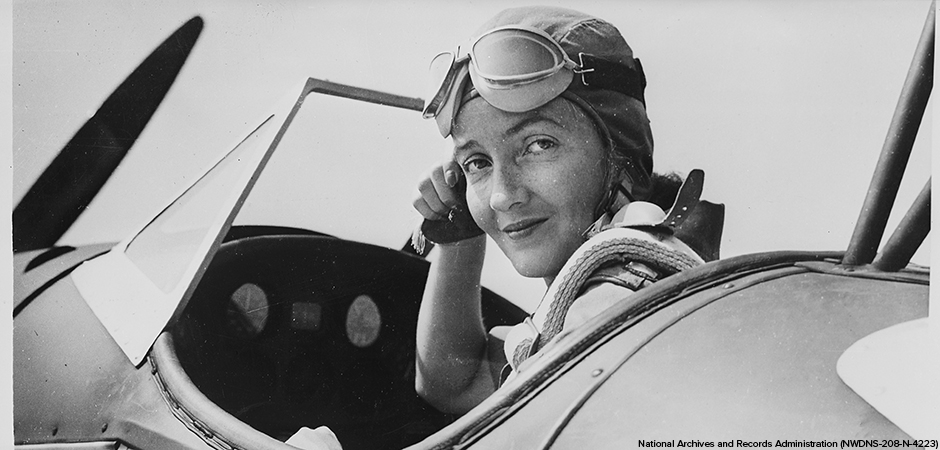
At the height of World War II, more than 1,000 women volunteered for U.S. military jobs that women had never held. They were aviation pioneers who made significant contributions to support the United States and its Allied partners in the war.
Called to Serve
The United States entered World War II on December 8, 1941. Thousands of men signed up to fight in Europe and the Pacific against Germany, Italy, and Japan. The U.S. military, however, was in desperate need of pilots. American military leaders feared there would not be enough pilots to win the war. Pilots were needed to fight overseas. However, they were also needed to fly military planes from factories to bases and to help train student pilots in the United States.
Women were not allowed to serve in combat. But two experienced female pilots, Nancy Harkness Love and Jacqueline Cochran, believed that women could still help the war effort. They proposed that women fly non-combat missions at home to allow men to fly combat missions overseas.
In 1942, Major General Henry Arnold of the Army Air Forces created two programs to train civilian, or non-military, females to be pilots. Love led a group of already-qualified women pilots to fly planes to training bases. Cochran oversaw an intensive training program to increase the number of women who could fly the planes. In 1943, these two groups merged and became the Women Airforce Service Pilots (WASP). The pilots were known as WASPs.
Their Role
Most of the flight training for WASPs took place at Avenger Field in Sweetwater, Texas. At first, women only trained on lighter or smaller planes. Eventually, however, they proved they could fly any type of aircraft, including heavy bombers and fighter planes. Soon women received mostly the same flight training as men. The only difference was that women were not trained in how to fly in combat.
By the time they graduated, WASPs had spent 560 hours in classroom instruction and 210 hours in flight training. They graduated with a commercial pilot’s license. Graduates also served as test pilots and worked in flight towers. The goal of the WASP program was to train women to perform any aviation job so that men could be sent to combat.
Duties
The duties of a WASP pilot were often dangerous and life-threatening. In addition to delivering planes to bases, the WASPs flew planes to help new pilots with target practice. WASP planes pulled long sleeves of material behind them as they flew. The sleeves acted as targets. Pilots and anti-aircraft gunners were trained to shoot live ammunition rounds at the sleeves. Anti-aircraft gunners later used this training to protect their ships from Japanese suicide bombers in the Pacific.
WASP pilots also tested planes. When pilots complained of mechanical failings in planes, WASPs tested them to diagnose the problem. Then, once the problem was fixed, WASPs would retest them to confirm that the repair was completed.
Recognition
The WASP pilot training program graduated 1,074 women. WASPs logged more than 60 million miles (96,561,000 km) and flew every type of American war plane. Eleven women died in training and 27 during flying missions. In 1944, as the United States and its allies defeated the German Air Force, the need for pilots eased. The last WASP class graduated at Sweetwater on December 7, 1944. The WASP program ended a few weeks later.
WASPs were considered civilian pilots, not military pilots. Because of this, WASPs had no government insurance, burial or death benefits, or military rank. Once the program ended, the women were not considered veterans. They could not receive veterans’ benefits. WASP leaders had always hoped that these pilots would be granted military status by Congress, but efforts failed.
In the mid-1970s, the Navy and the Air Force announced to the media that they would be allowing women to fly military planes for the first time in history. The WASPs were angered that their years of service had been forgotten. They rallied to secure their veterans’ status. Congressional leaders and public support helped them achieve this goal. In 1977, President Jimmy Carter granted former WASPs veteran status with limited benefits.
Then, in 2009, the women of WASP were awarded the Congressional Gold medal. Congress awards these medals to a person, group, or event for their achievements or contributions. Over 250 surviving WASPs attended the awards ceremony in 2010 in Washington, D.C.
